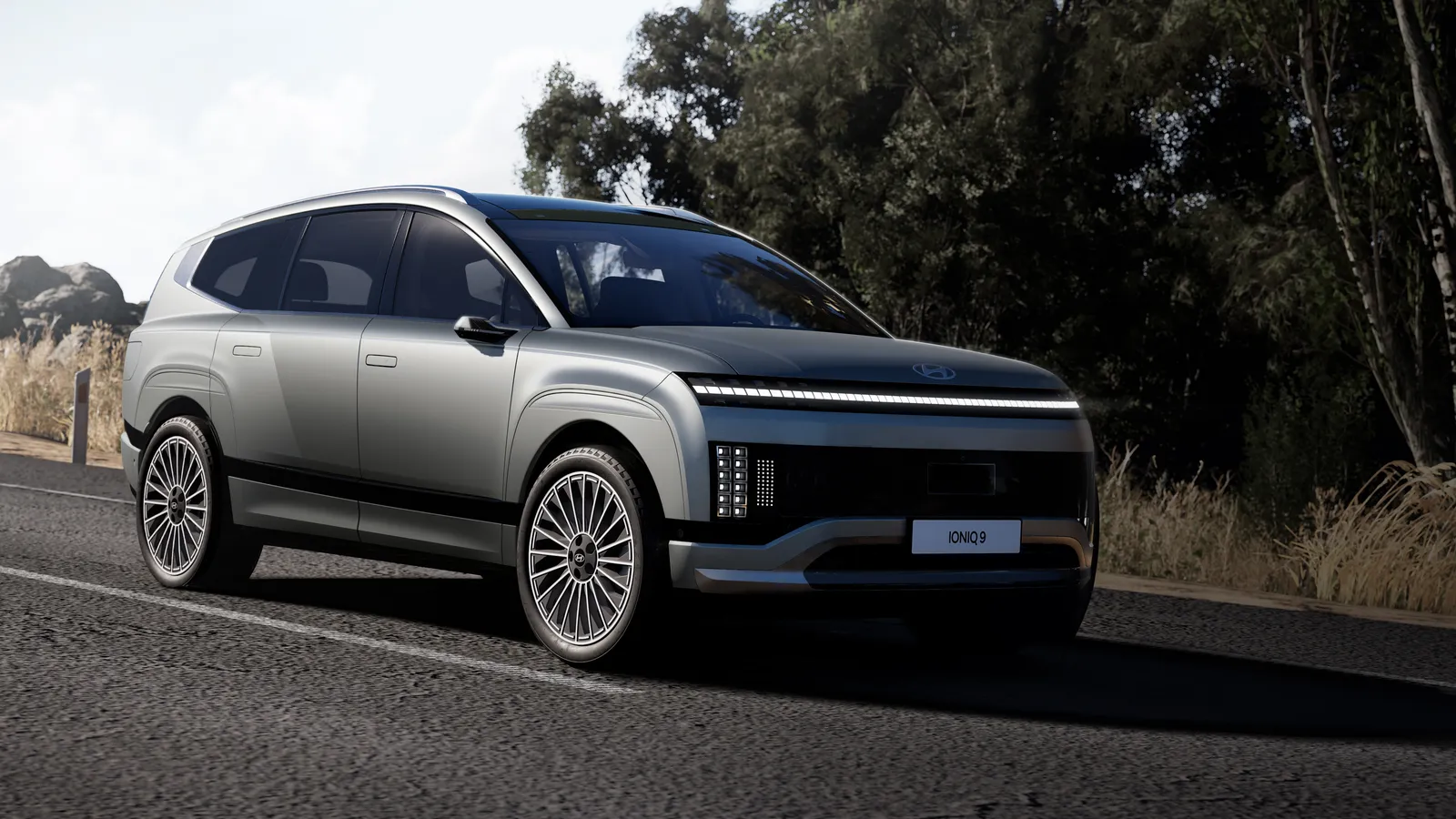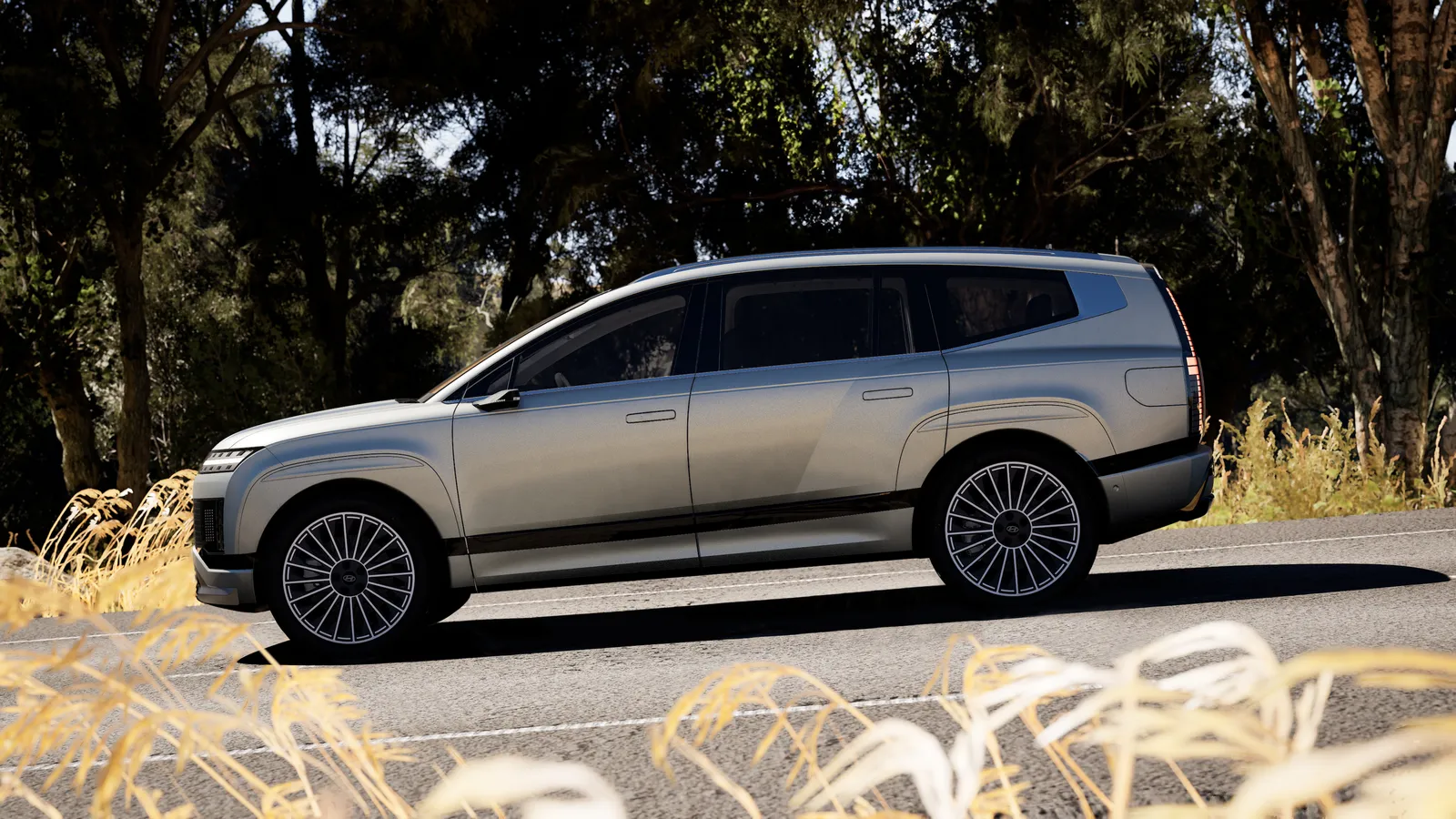A few weeks prior to the revealing of the all-new Hyundai Ioniq 9 at the 2024 Los Angeles Motor Show, fans had the opportunity for a preview of the brand’s flagship family vehicle.
To give us a better sense of what’s ahead, we were later shuttled to Hyundai and Kia’s California Proving Ground—an expansive 4,300-acre facility located in the desert, about 100 miles north of Los Angeles.
There, we would have the chance to experience the Ioniq 9 on various road types, albeit in a heavily camouflaged pre-production model, wrapped in cladding both inside and out.
This camouflaging, as we would soon realize, significantly influenced our driving impressions. Our first drive involved a complete lap of the 10km (6.2-mile) high-speed oval.
While we followed a pace car, the thick fabric covering the dashboard—including the digital instrument cluster—prevented us from determining our exact speed.
Although the Ioniq 9 was notably quiet at low speeds, we could hear noticeable wind noise around the A-pillars as the speed increased.
Despite not knowing our precise speed, the car felt stable at what we assumed to be 70mph or more.
The ride comfort was suitably firm, offering good comfort on the smaller wheels of our test vehicle. However, we’d like to test the larger 21-inch wheels on the top-spec versions before making a final judgment.
Just as the speed remained unclear, it was also challenging to make firm conclusions about the different driving modes. Cycling through the settings, the car generally showed strong initial acceleration, though it seemed to taper off at higher speeds.

Again, with the dashboard obscured, it was difficult to understand the exact setup. The Ioniq 9 is equipped with Hyundai’s familiar paddle-operated regenerative braking system, which performed well here, just as it does in their other models, including the intuitive, progressive one-pedal driving mode.
We were also given the opportunity to take the Ioniq 9 through a more challenging section with tight corners and sweeping bends.
Even with our limited experience, it was clear that Hyundai’s largest electric vehicle is tuned for predictability and safety at the limit. For example, if you’re too late on the brakes into a sharp right turn, the car will easily push into understeer.
Although it would require more testing to draw definitive conclusions, based on this experience, a Kia EV9 feels slightly more agile. Additionally, a five-seat BMW iX would likely outpace the Hyundai on a faster, twisty route.
Where the Ioniq 9 truly shines, however, is in its spaciousness. All seven seats offer ample head and legroom, with those in the back row enjoying plenty of space, without sacrificing comfort for passengers in the middle row.
The boot is enormous, and the flexible seating arrangements allow for prioritizing either passengers or luggage as needed.
We also had the chance to go through the infotainment system in the studio car. While its graphics may not be as advanced as those found in a BMW or a Volvo EX90, the system’s functionality is solid and housed in a premium-feeling, curved panel that stretches across much of the dashboard.
Inside the Ioniq 9, the quality is impressive, easily justifying its expected starting price of £65,000-£70,000.
Although we were unable to test the range or charging capabilities, Hyundai claims the Ioniq 9 can travel up to 372 miles on a full charge (346 miles for the dual-motor model).
Additionally, it can charge from 10 to 80 percent in just 24 minutes. While exact peak charge speeds haven’t been disclosed, an estimated 230-240kW suggests that this vehicle will be among the top performers in its segment, ensuring that charging stops won’t keep you off the road for long.

